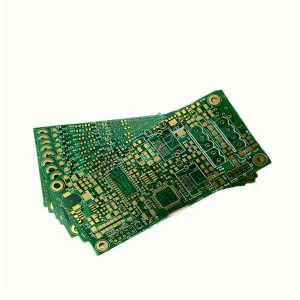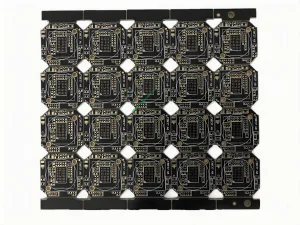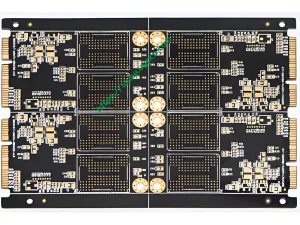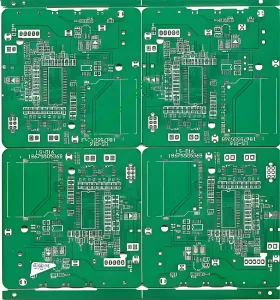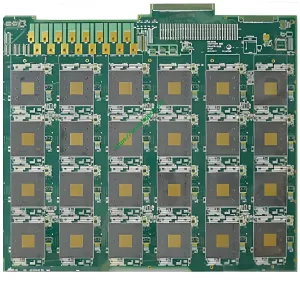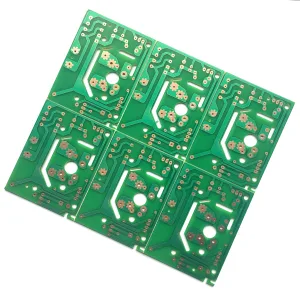Why ban halogen?
Halogen refers to the halogen elements in the periodic table of chemical elements, including fluorine (F), Chlor (CL), Brom (Br), und Jod (1). Derzeit, flame retardant substrates, FR4, CEM-3, usw., flame retardants are mostly brominated epoxy resin. Among the brominated epoxy resins, tetrabromobisphenol A, polymeric polybrominated biphenyls, polymeric polybrominated diphenyl ethers, and polybrominated diphenyl ethers are the main fuel barriers for copper clad laminates. They have low cost and are compatible with epoxy resins. Jedoch, studies by related institutions have shown that halogen-containing flame-retardant materials (Polybrominated Biphenyls PBB: Polybrominated Diphenyl Ethyl PBDE) will emit dioxin (dioxin TCDD), benzofuran (Benzfuran), usw. when they are discarded and burned. Large amount of smoke, unpleasant smell, highly toxic gas, carcinogenic, can not be discharged after ingestion, not environmentally friendly, and affect human health. daher, the European Union initiated the prohibition of using PBB and PBDE as flame retardants in electronic information products. The Ministry of Information Industry of China also requires that as of July 1, 2006, electronic information products put on the market must not contain substances such as lead, mercury, hexavalent chromium, polybrominated biphenyls or polybrominated diphenyl ethers.
The EU law prohibits the use of six substances including PBB and PBDE. It is understood that PBB and PBDE are basically no longer used in the copper clad laminate industry, and bromine flame retardant materials other than PBB and PBDE, such as tetrabromide, are mostly used. The chemical formula of bisphenol A, dibromophenol, usw. is CISHIZOBr4. This type of copper clad laminate containing bromine as a flame retardant is not regulated by any laws and regulations, but this type of bromine-containing copper clad laminate will release a large amount of toxic gas (brominated type) and emit a large amount of smoke during combustion or electrical fire. ; When the PCB is leveled with hot air and components are welded, the plate is affected by high temperature (>200), and a small amount of hydrogen bromide will be released; whether dioxins will also be produced is still under evaluation. daher, FR4 sheets containing tetrabromobisphenol A flame retardant are not currently prohibited by law and can still be used, but they cannot be called halogen-free sheets.
The principle of halogen-free PCB substrate
For now, most of the halogen-free PCB materials are mainly phosphorus-based and phosphorus-nitrogen-based. When phosphorous resin is burned, it is decomposed by heat to generate meta-polyphosphoric acid, which has strong dehydration property, so that a carbonized film is formed on the surface of the polymer resin, which insulates the burning surface of the resin from contact with air, extinguishes the fire, and achieves a flame-retardant effect. The polymer resin containing phosphorus and nitrogen compounds generates incombustible gas when burned, which helps the resin system to be flame-retardant.
Characteristics of halogen-free PCB
1. Insulation of halogen-free PCB material
Due to the use of P or N to replace the halogen atoms, the polarity of the molecular bond segment of the epoxy resin is reduced to a certain extent, Dadurch Verbesserung der Qualität des PCB -Isolationswiderstands und der Resistenz gegen den Zusammenbruch.
2. Wasserabsorption von halogenfreies PCB-Material
Das halogenfreie Blattmaterial hat weniger Elektronen als Halogene im Stickstoff-Phosphor-basierten Sauerstoffreduktionsharz. Die Wahrscheinlichkeit, Wasserstoffbrückenbindungen mit Wasserstoffatomen in Wasser zu bilden, ist niedriger als die von Halogenmaterialien, Die Wasseraufnahme des Materials ist also niedriger als herkömmliche PCB-Flammwirtschaftsmaterialien auf Halogenbasis. Für PCB -Boards, Niedrige Wasserabsorption hat einen gewissen Einfluss auf die Verbesserung der Zuverlässigkeit und Stabilität des Materials.
3. Wärmestabilität von halogenfreiem PCB-Material
Der Gehalt an Stickstoff und Phosphor in der halogenfreien PCB-Karte ist größer als der Halogengehalt gewöhnlicher Halogenmaterialien, so its monomer molecular weight and PCB Tg value have increased. In the case of heat, the mobility of its molecules will be lower than that of conventional epoxy resins, so the coefficient of thermal expansion of halogen-free PCB materials is relatively small.
 UGPCB-LOGO
UGPCB-LOGO


